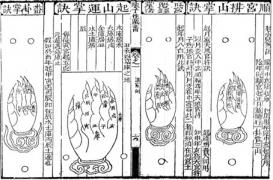When Chinese authors included diagrams of hands with characters inscribed on them in their books, they used the hand as a tu 圖—a diagram, map, illustration, or chart. The natural lines of the palm came to represent knowledge in a form more concrete, succinct, visual, and kinesthetic than was textually possible. Illustrations of hands as tu are also traces of both esoteric and vernacular knowledge. Although many have roots in esoteric religious practices and erudite medical prognostications, they represent a much broader vernacular knowledge practiced in everyday life. Chinese used hands as a means for intervening, learning, calculating, diagnosing, interpreting, confirming, and measuring. When found in almanacs, encyclopedias, medical books, and practical manuals, the “diagram of the fingers and palm” (“zhizhang tu” 指掌圖 ) bridged esoteric and vernacular worlds. After the fifteenth-century publishing boon, they are found in most domains of Chinese knowledge—palmistry, geomancy, the calendrical sciences, divination, mathematics, philosophy, music, poetry, medicine, and the law.
This book project on Chinese arts of memory, “Understanding Is Within One’s Grasp,” expanded from the medical examples already published on to include examples of the full range of examples found from the eighth to the twentieth centuries. Although hand mnemonics continue in religious practices, astrological prognostication, geomantic calculations, and medical diagnosis in Chinese culture today, the main focus of this book project was on the fifteenth to the nineteenth centuries when the use of the hand in Chinese arts of memory was most widespread and varied, bridging the esoteric and vernacular worlds of Chinese culture.

